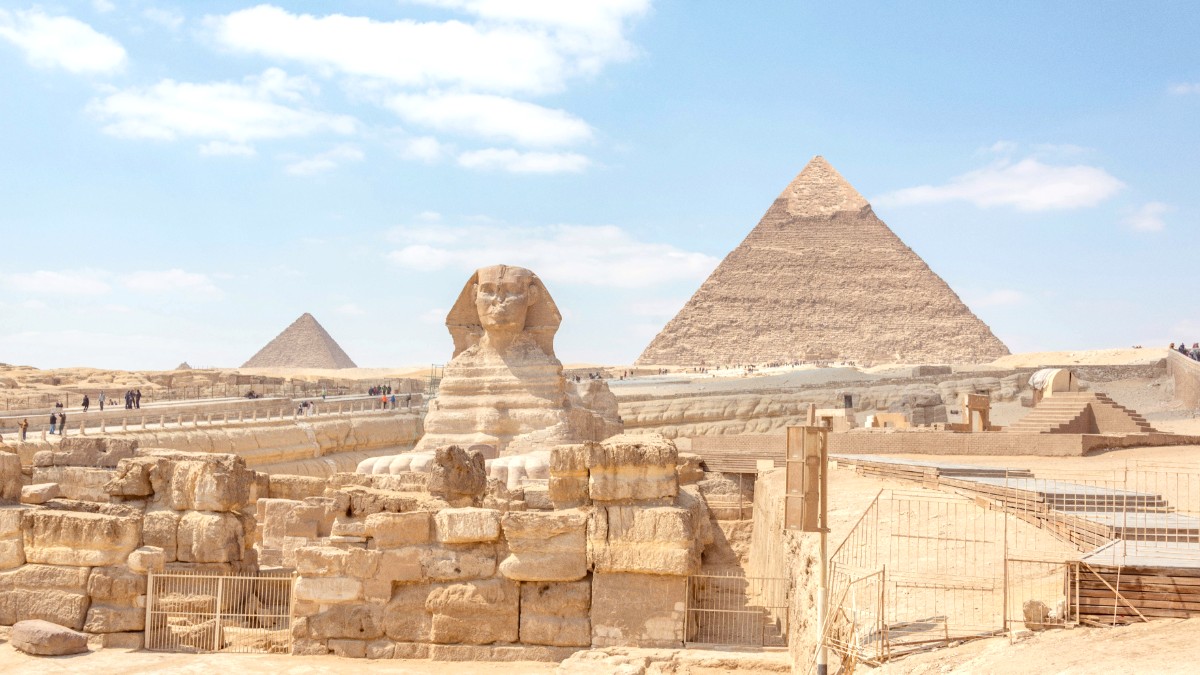
Cairo, Egypt
These monuments are not just stones; they are testaments to human ingenuity and enduring belief. A visit here goes beyond sightseeing; it becomes an experience that connects you to the dawn of civilization.
The Giza Pyramids Complex represents one of the most ancient and famous archaeological sites globally. Its origins trace back to the Fourth Dynasty of the Old Kingdom of ancient Egypt, a period roughly spanning from 2600 to 2500 BC. This complex served as a royal necropolis, a vast burial ground for pharaohs Khufu, Khafre, and Menkaure, and their families.
Builders constructed these structures as tombs. They housed the remains of deceased pharaohs and served as monumental tributes to their lives and power. Egyptians believed these pyramids facilitated the pharaohs' journey into the afterlife, providing a secure and grand resting place. The Great Pyramid of Giza, built for Pharaoh Khufu, held the record as the world's tallest man-made structure for over 3,800 years. It is the only remaining wonder of the original Seven Wonders of the Ancient World.
The complex features the Great Pyramid of Khufu, the Pyramid of Khafre, and the Pyramid of Menkaure. It also includes the Great Sphinx, smaller satellite pyramids, connecting causeways, various temples, and numerous mastabas.
Builders constructed the complex approximately between 2600-2500 BC, within the Fourth Dynasty of Egypt's Old Kingdom. The Great Pyramid of Khufu is the only remaining ancient wonder of the world.
Giza Plateau, Giza, Egypt (part of the greater Cairo metropolitan area).
Pharaoh Khufu, his son Pharaoh Khafre, and his grandson Pharaoh Menkaure.
Fourth Dynasty of Egypt's Old Kingdom period (approx. 2600-2500 BC).
Recognized in 1979 as part of "Memphis and its Necropolis – From the Pyramid Fields from Giza to Dahshur."
Major tourist attraction and active archaeological site with ongoing research.
The iconic Great Sphinx adds to the complex. It is a guardian figure, symbolizing royal power and protection, often associated with Pharaoh Khafre. This entire complex tells a story of an advanced civilization, its religious beliefs, architectural prowess, and the enduring power of its rulers.
The site also includes several smaller pyramids for queens, causeways, mortuary temples, and numerous mastabas. Mastabas are flat-roofed, rectangular superstructures over a deep burial shaft. These smaller structures housed nobles and high-ranking officials.
The Giza Plateau's elevation presented a strategic and stable foundation for these massive structures, keeping them above the Nile's floodwaters and offering a clear view across the valley. The desert backdrop highlights the monuments, creating the stark, beautiful landscape seen in countless photographs.
A quick overview helps set the stage for your visit to the Giza Pyramids Complex. This site represents a pinnacle of ancient Egyptian civilization and a point of fascination for people worldwide.
A visit to the Giza Pyramids offers a profound connection to ancient history.
Polite but firm communication with vendors and guides creates positive interactions.
While the Pyramids and Sphinx are the main draws, nearby attractions enrich your visit.
Arrive at opening to avoid peak crowds and the midday sun, creating a more peaceful experience.
Carry plenty of bottled water, especially during warmer months, to combat dehydration in the desert climate.
Sturdy, comfortable shoes are advisable for walking on uneven and sandy terrain throughout the complex.
Bargaining is a common practice in markets (like Khan el-Khalili Bazaar) and for services like camel rides. Approach it with a smile.
Tipping (baksheesh) is customary for many services. Carry small denominations of Egyptian Pounds for this purpose.
Dress modestly, especially when visiting religious sites, to show respect for local customs.